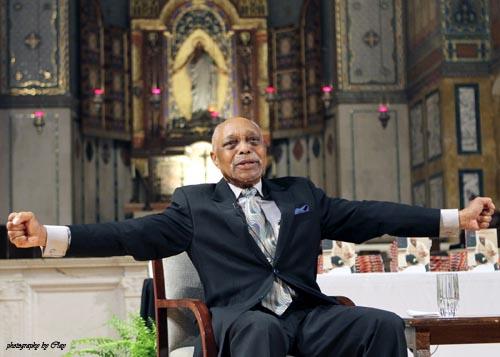In the wake of George Floyd’s death, the United States has been gripped by fury over the nation’s persistent racism and police brutality. The unrest is reminiscent of the 1992 Los Angeles riots, which erupted after a jury acquitted four police officers in the beating of black motorist Rodney King. KCET profiled Rev. Cecil ‘Chip’ Murray, chair of the USC Cecil Murray Center for Community Engagement, and looked back at his involvement in rebuilding after the riots.
As the unrest raged on, Murray delivered sermons that both condemned the violence and called out the systemic oppression that sparked them. “We are not proud that we set those fires, but we’d like to make a distinction to America this morning about the difference between setting a fire and starting a fire,” he told his congregation on May 3, 1992, the day the unrest ended. “We set some of those fires, but we didn’t start any of those fires. Those fires were started when some men of influence decided that this nation can indeed exist half slave and half free. Those fires were started when some men poured gasoline on the Constitution of the United States of America.”
After the uprising ended, Murray not only raised awareness about the inequalities that Black Angelenos faced — speaking with elected officials about the impact that joblessness, crime and the crack epidemic had on his community — he also oversaw the launch of FAME Renaissance, the church’s economic development arm tasked with helping to rebuild South L.A.; it brought jobs, housing and $400 million in corporate investment to the community. FAME hired 180 people for the effort, and then-President George H. W. Bush named the church the “177th Point of Light” because of its service to the community. That title comes from the late president’s Points of Light nonprofit focused on volunteerism and social change.
Read the full profile here.
To support the Cecil Murray Center’s work, click here.




